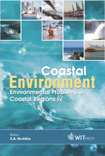Highly Accurate Simulation Of The Surface Wind Over Ise Bay
Price
Free (open access)
Transaction
Volume
58
Pages
Published
2002
Size
486 kb
Paper DOI
10.2495/CENV020261
Copyright
WIT Press
Author(s)
T Ohsawa, K Fukao & T Yasuda
Abstract
Highly accurate simulation of the surface wind field over Ise Bay T. Ohsawa, K. Fukao, & T. Yasuda Environmental and Renewable Energy Systems Division Graduate school of Engineering Gifu University, Japan Abstract Using the fifth-generation Pennsylvania State University / National Center for Atmospheric Research (NCAR) mesoscale model (MM5), we simulate the surface wind field over Ise Bay, which is located in the central part of Japan and faces the Pacific. The simulation is performed for the whole month of March, 2001, and its accuracy is validated with observations at a marine tower station located in the bay. As a result, we found that MM5 can reproduce the surface wind field over the bay with a high degree of accuracy. The bias and the root mean squared error of the simulated wind speed are -0.5 m/s and 1.9 m/s, respectively. Limited to winds of more than 5 m/s, the root mean squared error in wind direction is 29.3o. We also found that the surface winds simulated by MM5 are more accurate than those obtained by other conventional methods based on observations of wind and pressure at onshore stations. 1 Introduction Ise Bay, on which we focus in this paper, is a bay with an area of 2,342km2, and it is located in the central part of Japan, heading its mouth for the Pacific. The bay has a large population and large industrial areas on its shore, and it is one of the principal bays in Japan. The bay is also well-known for its experience of the worst storm surge disaster in the Japanese history, caused by a severe typhoon hitting the bay in 1959, which was later called the Ise Bay Typhoon. In recent years, the bay suffers from water pollution and the increase of nutrient loads, like most bays in the country. Thus, in terms of disaster prevention and environmental conservation, an ocean monitoring system is necessary for the bay.
Keywords





